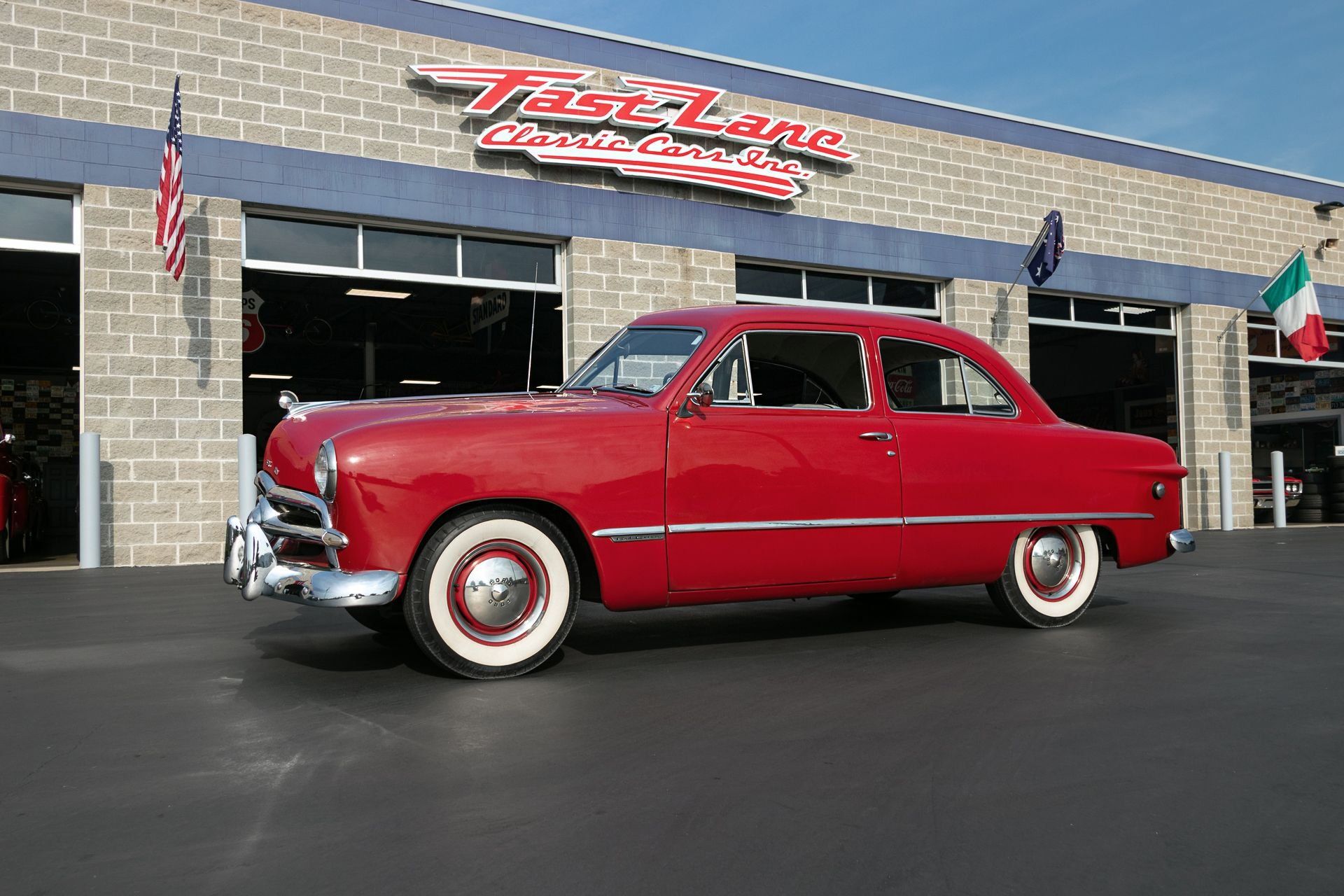
Alright, gearheads and casual commuters, listen up. Buying a new car is one of the biggest financial decisions many of us will make, and let’s be honest, it’s easy to get swept away by glossy advertisements and the shiny promise of a fresh ride. But here’s the cold, hard truth: not every new car is a winner, and some are, frankly, downright bad buys that could leave you regretting your purchase for years, bleeding cash for repairs, and utterly frustrated with your daily drive. Nobody wants a lemon in their driveway, especially not one they paid new car prices for.
The automotive landscape is constantly shifting, with manufacturers pushing new tech, new designs, and new promises. However, beneath the surface of alluring marketing hype often lie serious mechanical issues, design flaws, and reliability concerns that can turn your dream vehicle into a costly burden. We’re talking about everything from transmission failures and persistent electrical glitches to sky-high depreciation and subpar driving experiences. Ignoring these red flags is like buying a house without an inspection—you’re just asking for trouble.
That’s why we’re here. We’ve dug through the data, pored over reliability scores from sources like Consumer Reports, and distilled expert opinions to bring you the definitive list of cars you seriously shouldn’t be buying in 2025. Our goal isn’t just to list names; it’s to arm you with the knowledge to make an informed decision, save your hard-earned cash, and avoid the headache of owning a vehicle that consistently lets you down. Let’s dive into the first batch of vehicles you should definitely sidestep.
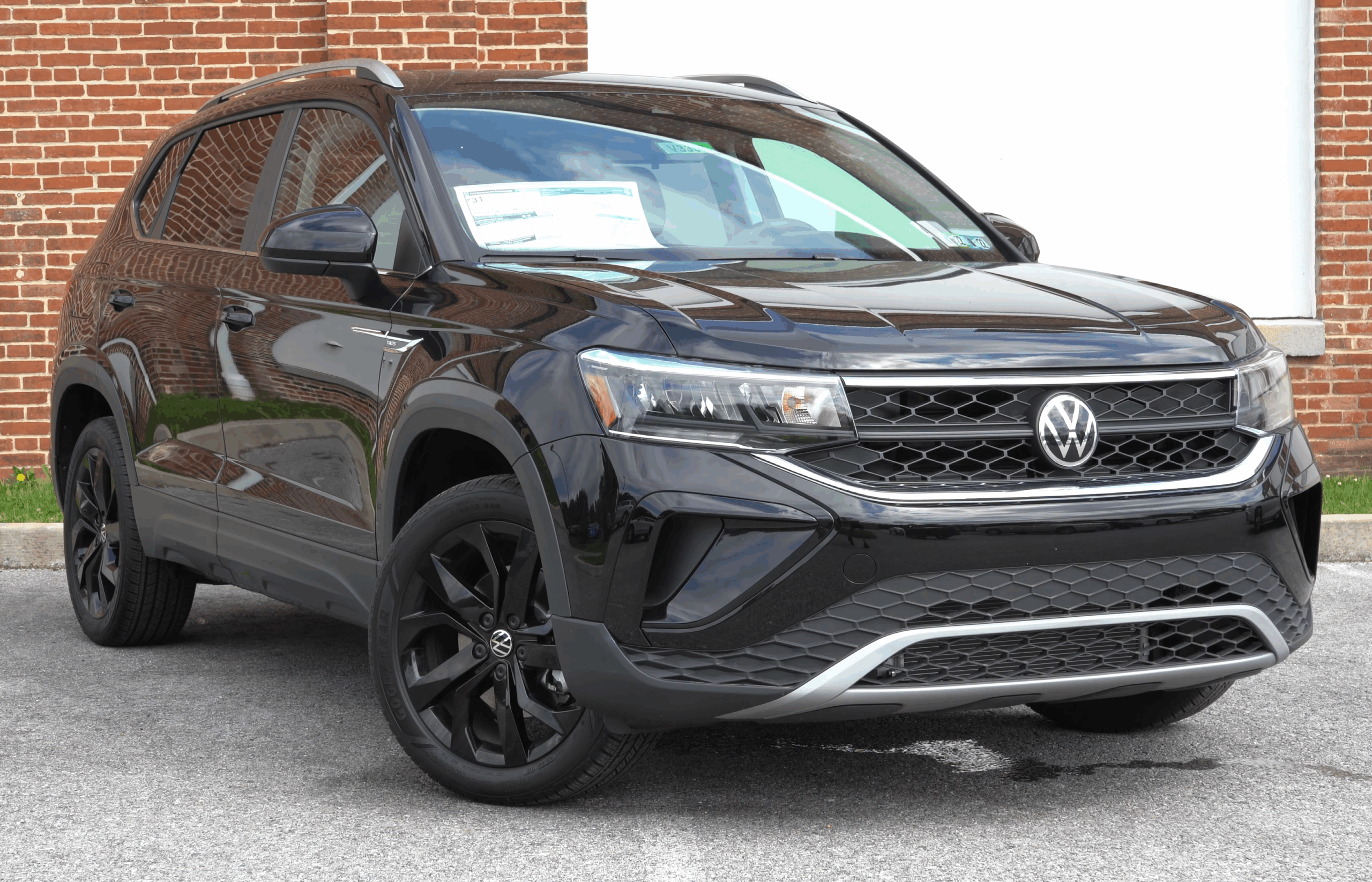
1. **Volkswagen Taos**: Let’s kick things off with the Volkswagen Taos, a compact SUV that, despite its relatively recent entry, has quickly found itself on lists you really don’t want to be on. Consumer Reports, a venerable name in vehicle assessments, slapped it with an abysmal reliability score of just 18 out of 100 for 2024. That’s not just a low score; that’s a flashing neon sign warning you to proceed with extreme caution, or better yet, just keep walking.
The issues plaguing the Taos are not isolated incidents but a systemic constellation of trouble spots that touch nearly every critical area of the vehicle. We’re talking about problems cropping up with the brakes, a pretty fundamental part of safe driving, and persistent electrical accessories malfunctions that can turn modern conveniences into frustrating quirks. Even more concerning are reports of issues with the transmission, engine, and electric system, which are the very heart and soul of any car.
Beyond the mechanical headaches, owners have reported problems with in-car electronics and various noises and leaks, chipping away at the overall ownership experience. Car and Driver also chimed in, noting that the Taos’s acceleration is “nothing to write home about,” which is a polite way of saying it feels underpowered and uninspiring. When you combine this lukewarm performance with its alarming reliability scores, you quickly realize there are simply better options out there for your money, delivering more bang for your buck and far fewer visits to the service bay.
Car Model Information: 2022 Volkswagen Taos 1.5T S
Name: Volkswagen Taos/Tharu
Manufacturer: Volkswagen
Aka: Volkswagen Tharu
Production: ubl
Assembly: ubl
Designer: Klaus Zyciora
Class: Compact crossover SUV
BodyStyle: SUV
Layout: Front-engine, front-wheel-drive,Front-engine, all-wheel-drive
Platform: Volkswagen Group MQB A1
Related: SEAT Ateca,Škoda Karoq,Jetta VS5
Engine: Petrol engine,Turbocharger,1.4 L TSI 150 I4,1.5 L TSI 160 I4,Multi-point fuel injection,2.0 L TSI 190 I4
Transmission: Manual transmission
Battery: 44.1 kWh (e-Tharu)
ElectricRange: convert
Wheelbase: 105.9 in
Abbr: on
Order: 4453 mm
Length: 175.8 in
Width: 1841 mm
Height: convert
ModelYears: 2022–present
Categories: All-wheel-drive vehicles, All Wikipedia articles written in British English, Articles with short description, CS1 Brazilian Portuguese-language sources (pt-br), CS1 Mexican Spanish-language sources (es-mx)
Summary: The Volkswagen Taos is a compact crossover SUV marketed by Volkswagen. It was first released in October 2018 as the Volkswagen Tharu in China, while the Taos was released in October 2020 as a restyled version of the Tharu for the North American, South American, and Russian markets. In the brand’s lineup, the vehicle is positioned below the Tiguan, and in South America and China above the T-Cross. It is not marketed in core European market.
The Taos is named after Taos, New Mexico. The Tharu name is derived after the eponymous Tharu people, an ethnic group indigenous to Nepal and Northern India.
Get more information about: Volkswagen Taos
Buying a high-performing used car >>>
Brand: Volkswagen Model: Taos
Price: $19,500 Mileage: 10,385 mi.
Read more about: 12 SUVs to Steer Clear Of: Critical Insights into Models That Age Poorly and Rack Up Repair Bills
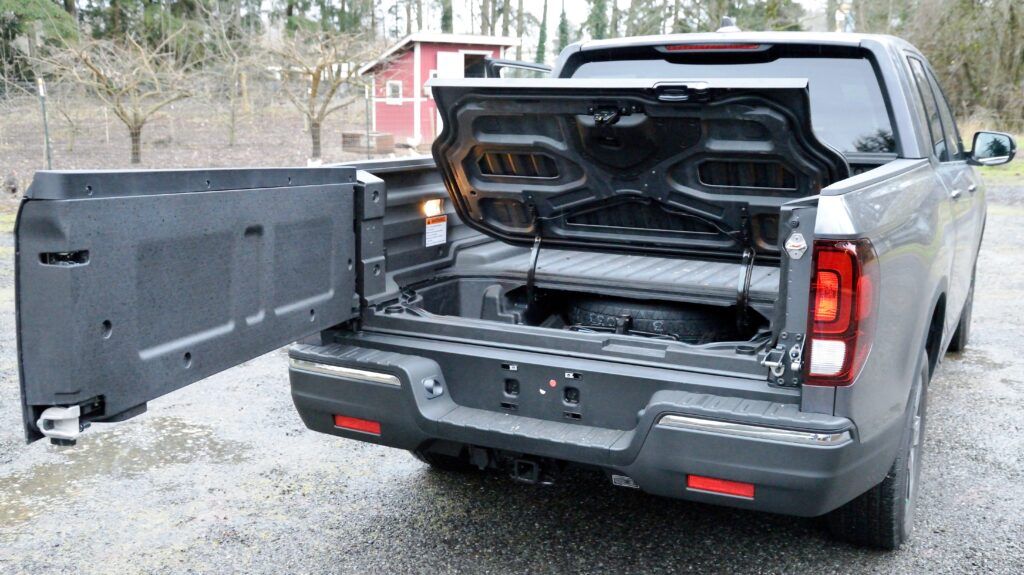
2. **Honda Ridgeline**: Next up, we have the Honda Ridgeline, a truck that often tries to play both sides of the fence—part SUV, part pickup. While generally praised for its comfortable ride and intelligent packaging, the 2025 model presents a peculiar problem: a striking lack of significant changes from its 2024 predecessor. This isn’t just a minor oversight; it’s a strong argument against buying the “new” model when you could likely save a substantial amount by opting for a slightly older, nearly identical version. Why pay a premium for a new model year badge if nothing meaningful has actually been updated or improved?
For truck buyers, utility is often paramount, and here the Ridgeline struggles to compete. A consistent critique from auto experts revolves around its comparatively weak towing capability when stacked against other bona fide trucks in its class. If you’re looking to haul heavy loads, pull a decent-sized trailer, or rely on your truck for serious work, the Ridgeline’s limitations become glaringly obvious. It simply doesn’t measure up to the grunt work capabilities offered by its rivals.
This isn’t to say the Ridgeline is without its merits; it offers a car-like driving experience that many find appealing. However, if your primary concern is genuine truck utility and the robust capabilities expected of a pickup, then its lack of towing prowess is a major handicap. Given the stagnation in its model year updates and its inherent functional compromises for a truck, prospective buyers who prioritize power, capability, and value in a new vehicle purchase would be wise to explore other, more purpose-built alternatives currently dominating the market.
Car Model Information: 2024 Honda Ridgeline Black
Name: Honda Ridgeline
Manufacturer: Honda
Caption: 2022 Honda Ridgeline
Production: 2005–early 2015,2016–present
ModelYears: 2006–2014,2017–present
Assembly: Alliston, Ontario
Class: Pickup truck#Mid-size pickup truck
BodyStyle: 4-door pickup truck
Layout: ubl
Categories: 2010s cars, All-wheel-drive vehicles, All Wikipedia articles written in American English, Articles with short description, CS1 maint: multiple names: authors list
Summary: The Honda Ridgeline is a mid-size pickup truck manufactured and marketed by Honda since the 2006 model year, over two generations in a unibody, crew–cab, short-box configuration with a transverse-mounted engine.
Get more information about: Honda Ridgeline
Buying a high-performing used car >>>
Brand: Honda Model: Ridgeline
Price: $37,970 Mileage: 31,379 mi.
Read more about: Unlocking Unbeatable Value: The 14 Best Used Car Deals for Savvy Buyers, Backed by Expert Analysis and Data

3. **BMW ActiveHybrid 5**: When people opt for a hybrid vehicle, there’s usually a pretty clear expectation: superior fuel economy. After all, that’s the whole point of pairing an electric motor with a gasoline engine, right? Unfortunately, the BMW ActiveHybrid 5 utterly fails to deliver on this fundamental promise, making it a perplexing entry on our list of cars to avoid. If your hybrid isn’t saving you at the pump, then what exactly is it doing for you?
According to TopSpeed, this luxury hybrid clocks in at a combined 26 miles per gallon. Now, in the grand scheme of things, 26 MPG isn’t terrible for a conventional gasoline-powered luxury sedan. However, for a hybrid, particularly one bearing the premium BMW badge and all the associated costs, it’s downright disappointing. Similar hybrid models on the market consistently achieve significantly higher fuel efficiency, rendering the ActiveHybrid 5’s hybrid powertrain largely ineffective as a money-saving proposition.
The additional complexity and potential long-term maintenance costs that come with any hybrid system become hard to justify when there’s no substantial fuel economy benefit to offset them. You’re essentially paying a premium for hybrid technology without reaping its primary advantage. For those seeking the blend of luxury and genuine fuel efficiency that a hybrid *should* offer, the BMW ActiveHybrid 5 serves as a stark reminder that not all hybrid badges are created equal, and some are best left on the dealer lot.
Car Model Information: 2019 Mazda CX-5 Grand Touring Reserve
Name: BMW 5 Series,(F10/F11/F07/F18)
Manufacturer: BMW
Production: 2010–2017
ModelYears: 2011–2017
Assembly: ubl
Designer: Jacek Fröhlich (sedan: 2006)
Class: Executive car
BodyStyle: sedan (car),Wheelbase#Varying_wheelbases_within_nameplate,station wagon,fastback
Layout: Front-engine, rear-wheel-drive,Front-engine, all-wheel drive
Platform: BMW L6
Engine: unbulleted list
Transmission: unbulleted list
Wheelbase: 2968 mm
Abbr: on
Length: convert
Width: 1860 mm
Height: 1460 mm
Weight: convert
Predecessor: BMW 5 Series (E60)
Successor: BMW 5 Series (G30)
Related: BMW 7 Series (F01),BMW 6 Series (F12),BMW X5 (F15),VinFast LUX A2.0
Categories: All Wikipedia articles written in British English, All articles with dead external links, All articles with failed verification, Articles with dead external links from February 2022, Articles with failed verification from June 2020
Summary: The sixth generation of the BMW 5 Series consists of the BMW F10 (saloon version), F18 (long-wheelbase saloon), BMW F11 (wagon, marketed as Touring) and BMW F07 (fastback/hatchback, marketed as Gran Turismo) executive cars and were produced by BMW from January 2010 (for the 2011 model year) to 2017, with F10 being launched on 20 March 2010 to domestic market and F11 in the summer of 2010. The F07 Gran Turismo was produced from early September 2009 to 2017, being launched in the domestic German market in late October 2009.
The F10 5 Series shares a platform with the F01 7 Series full-size luxury saloon and the F12 6 Series executive-sized grand tourers. The F10 generation is the first 5 Series to offer a hybrid drivetrain, a turbocharged V8 engine, an 8-speed automatic transmission, a dual-clutch transmission (in the M5), active rear-wheel steering (called “Integral Active Steering”), electric power steering, double-wishbone front suspension, an LCD instrument cluster (called “Black Panel Display”) and automatic parking (called “Parking Assistant”). A long-wheelbase saloon version (model code F18) was sold in China, Mexico, Turkey and the Middle East. Introduced in 2011, the M5 model is powered by the BMW S63 twin-turbocharged V8 engine coupled to a 7-speed dual clutch transmission. The Gran Turismo (F07) is the first and only 5 Series to be produced in a fastback body style with a hatchback boot opening.
In February 2017, the G30 5 Series was released as the successor to the F10. Based on the G30 platform, the G32 6 Series Gran Turismo succeeded the F07.
Get more information about: BMW 5 Series (F10)
Buying a high-performing used car >>>
Brand: BMW Model: ActiveHybrid 5
Price: $20,961 Mileage: 52,000 mi.
Read more about: Informed Decisions: Auto Experts Reveal 7 Hybrid Cars Consumers Might Reconsider Before Buying
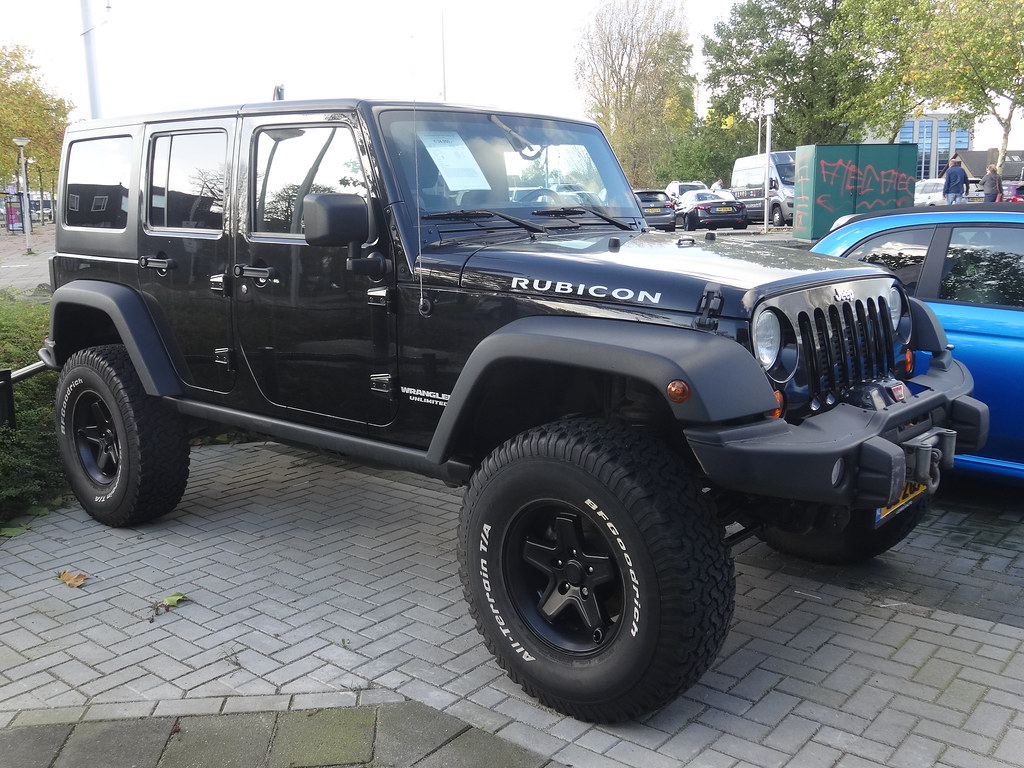
4. **Jeep Wrangler**: Ah, the Jeep Wrangler. It’s the poster child for adventure, the undisputed king of the trails, and the vehicle that screams “freedom” to legions of fans. But before you dive headfirst into that iconic seven-slot grille, let’s inject a dose of reality into the romantic notion of Wrangler ownership. For 2025, if your driving primarily involves anything other than extreme off-roading, you might want to seriously reconsider. Consumer Reports, not one to pull punches, gave it a paltry reliability score of 27 out of 100, which, let’s be frank, is barely above “broken on arrival.”
The issues plaguing the Wrangler are not minor inconveniences; they strike at the heart of daily drivability and long-term ownership. We’re talking persistent complaints about the steering and suspension systems. Edmunds has noted the steering feels “slow and loose,” a characteristic that’s charming on a rocky trail but terrifying on the freeway, where it can contribute to the dreaded “death wobble.” This isn’t just a quirky Jeep thing; it’s a safety and comfort issue that can make long drives an absolute chore.
Beyond the steering, owners frequently report problems with the electrical system, the engine, and the drive system. These aren’t just minor glitches; these are core components that dictate whether your vehicle starts, moves, and functions reliably. When a vehicle’s fundamental systems are consistently flagged as trouble spots, it translates directly into frustrating dealership visits, unexpected repair bills, and a general erosion of confidence in your ride.
And let’s not even get started on practicality. For all its rugged exterior, the Wrangler is notoriously inefficient with interior space. Edmunds points out its limited cargo capacity compared to other similarly-sized cars, making it less than ideal for grocery runs, luggage for a family trip, or even just carrying your gear without playing Tetris. Add in the significant road noise and its questionable on-road manners, and the 2025 Jeep Wrangler quickly morphs from an adventure fantasy into a daily compromise, one that many buyers would be wise to avoid for their primary vehicle.
Car Model Information: 2024 Jeep Wrangler 4-Door Sahara 4×4
Name: Jeep Wrangler
Caption: Jeep Wrangler Unlimited, Sahara edition
Manufacturer: Jeep
Class: Compact SUV
Production: 1986–present
Predecessor: Jeep CJ
Layout: Front-engine, rear-wheel-drive layout,rear-wheel drive
Chassis: Body-on-frame
Related: AIL Storm
Categories: 1980s cars, 1990s cars, 2000s cars, 2010s cars, All-wheel-drive vehicles
Summary: The Jeep Wrangler is a series of compact and mid-size four-wheel drive off-road SUVs manufactured by Jeep since 1986, and currently in its fourth generation. The Wrangler JL, the most recent generation, was unveiled in late 2017 and is produced at Jeep’s Toledo Complex.
The Wrangler is a direct progression from the World War II Jeep, through the CJ (Civilian Jeeps) produced by Willys, Kaiser-Jeep, and American Motors Corporation (AMC) from the mid-1940s through the 1980s. Although neither AMC nor Chrysler (after it purchased AMC in 1987) have claimed that the Wrangler was a direct descendant of the original military model — both the CJ Jeeps and the conceptually consistent Wrangler, with their solid axles and open top, have been called the Jeep model as central to Jeep’s brand identity as the rear-engine 911 is to Porsche.
Similar to the Willys MB and the CJ Jeeps before it, all Wrangler models continue to use a separate body and frame, rigid live axles both front and rear, a tapering nose design with flared fenders, a fold-flat windshield, and can be driven without doors. Also, with few exceptions, they have part-time four-wheel drive systems, with the choice of high and low gearing, and standard open bodies with removable hard or soft tops. However, the Wrangler series was specifically redesigned to be safer and more comfortable on-road, to attract more daily drivers, by upgrading its suspension, drivetrain, and interior, compared to the CJ line. The suspension on all Wranglers included trackbars and anti-roll bars, and, from the 1997 TJ onwards, front and rear coil springs instead of the previous leaf springs.
From 2004 on, the Wrangler has been complemented with long-wheelbase versions, called Wrangler Unlimited. 2004-2006 models were longer versions with 2 doors. In 2004, only automatic transmission-equipped “Unlimited” versions were sold. In 2005, both an automatic and manual 6-speed (NSG-370) were offered. Since 2007, the long-wheelbase Wranglers were four-door models, offering over 20 in (508 mm) more room. By mid-2017, the four-door models represented three-quarters of all new Wranglers on the market.
Get more information about: Jeep Wrangler
Buying a high-performing used car >>>
Brand: Jeep Model: Wrangler
Price: $43,885 Mileage: 25,348 mi.
Read more about: Unmasking the Hype: 14 Overrated Trucks & SUVs That Fall Short for Tough Jobs, According to Engineers and Towing Tests
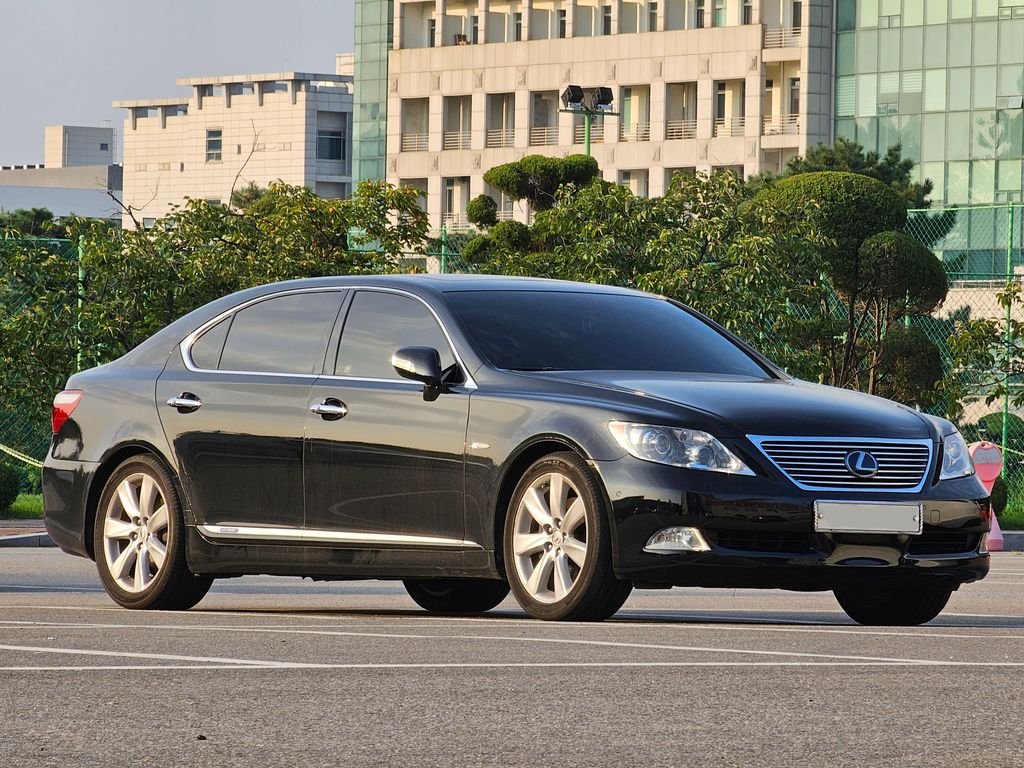
5. **Lexus LS 600h L**: Here’s another head-scratcher in the hybrid luxury segment: the Lexus LS 600h L. Much like its BMW counterpart, this vehicle positions itself as a sophisticated, eco-conscious choice for the discerning driver. Yet, when you look past the plush leather and quiet cabin, you find a glaring flaw that undermines its very purpose: its abysmal fuel economy for a hybrid. It’s a luxury sedan, yes, but its hybrid system is supposed to offer an advantage beyond just a ‘green’ badge.
According to TopSpeed, the LS 600h L managed a combined 20 MPG, putting it in a tie with the BMW ActiveHybrid 7 for the unenviable title of “worst fuel efficiency among hybrids.” Let that sink in for a moment. You’re shelling out top dollar for a Lexus, opting for the hybrid variant, presumably to gain some efficiency, only to find it performing worse than many conventional gasoline-powered sedans, let alone other hybrids. This is not the kind of innovation or value one expects from a brand like Lexus, renowned for its reliability and thoughtful engineering.
The promise of a hybrid is to offer a blend of performance and efficiency, often leading to lower running costs and a smaller carbon footprint. The LS 600h L delivers on neither of these crucial hybrid tenets effectively. The added complexity and weight of its hybrid powertrain, combined with its large luxury sedan status, simply don’t translate into any tangible benefits at the pump. It’s a prime example of a technology being implemented without a clear, advantageous outcome for the end-user.
For potential buyers in the luxury segment, particularly those eyeing a hybrid, this model represents a poor investment. You’re paying for advanced technology that doesn’t deliver its core benefit, while still incurring the higher purchase price and potential long-term maintenance complexities associated with hybrid systems. If you’re going to spend this kind of money on a luxury sedan, you’d be far better off choosing a conventional gasoline model with similar fuel economy, or a truly efficient hybrid that actually lives up to its name.
Car Model Information: 2019 Mazda CX-5 Grand Touring Reserve
Name: Lexus LS (XF40)
Caption: Lexus LS 460 (USF40; first facelift)
Alt: Front three-quarters view of gold sedan
Manufacturer: Toyota
Production: August 2006 – October 2017
ModelYears: 2007–2017
Assembly: Tahara, Aichi
Designer: Yo Hiruta (2003, 2004)
Class: Full-size,luxury car
BodyStyle: Sedan (automobile)
Layout: ubl
Platform: Toyota N platform
Related: Toyota Century (G60)
Engine: ubl
Motor: Alternating current,Synchronous motor
Transmission: ubl
Drivetrain: Hybrid Synergy Drive
Length: ubl
Abbr: on
Width: 1875 mm
Height: ubl
Wheelbase: ubl
Weight: ubl
Predecessor: Lexus LS (XF30)
Successor: Lexus LS (XF50)
Categories: All-wheel-drive vehicles, All Wikipedia articles written in American English, All articles with dead external links, All articles with failed verification, Articles with dead external links from September 2025
Summary: The Lexus LS (XF40) is the fourth generation of the Lexus LS—a series of full-size luxury cars. Produced by Lexus, the luxury division of the Japanese automaker Toyota, the XF40 served as the flagship vehicle of the former’s lineup from 2006 until production ended in 2017.
The successor to the XF30 LS, the development of the XF40 began under the direction of Moritaka Yoshida. Focusing on simplicity, the XF40 was designed by Yo Hiruta, incorporating the L-finesse design philosophy—first introduced in 2001 with the GS. The LS 460 debuted at the North American International Auto Show in January 2006, while the hybrid–electric version, the LS 600h, was unveiled at the New York International Auto Show in April 2006. Official series manufacture began at the facility in Tahara, Aichi, in August 2006. Each XF40 model was produced in two wheelbase variants: a short-wheelbase version and a long-wheelbase version, the latter designated by an “L” at the end of the model name.
The XF40 was the subject of two updates, the first of which occurred in 2009. This involved minor updates to its front and rear fascia, engine power, and interior. The second—and most significant—occurred in 2013, including noteworthy upgrades to incorporate the company’s corporate fascia, comprising the implementation of the “spindle” grille and prominently redesigned headlamps. Production of the XF40 ended in October 2017, and it was replaced by the XF50 LS. The XF40 is the recipient of numerous accolades, including the Wheels Car of the Year and the World Car of the Year award in 2006 and 2007, respectively.
Get more information about: Lexus LS (XF40)
Buying a high-performing used car >>>
Brand: Lexus Model: LS 600h L
Price: $20,961 Mileage: 52,000 mi.
Read more about: Navigating the Fast Lane: A Commuter’s Guide to the 9 Most Gas-Guzzling Sedans in Today’s Market
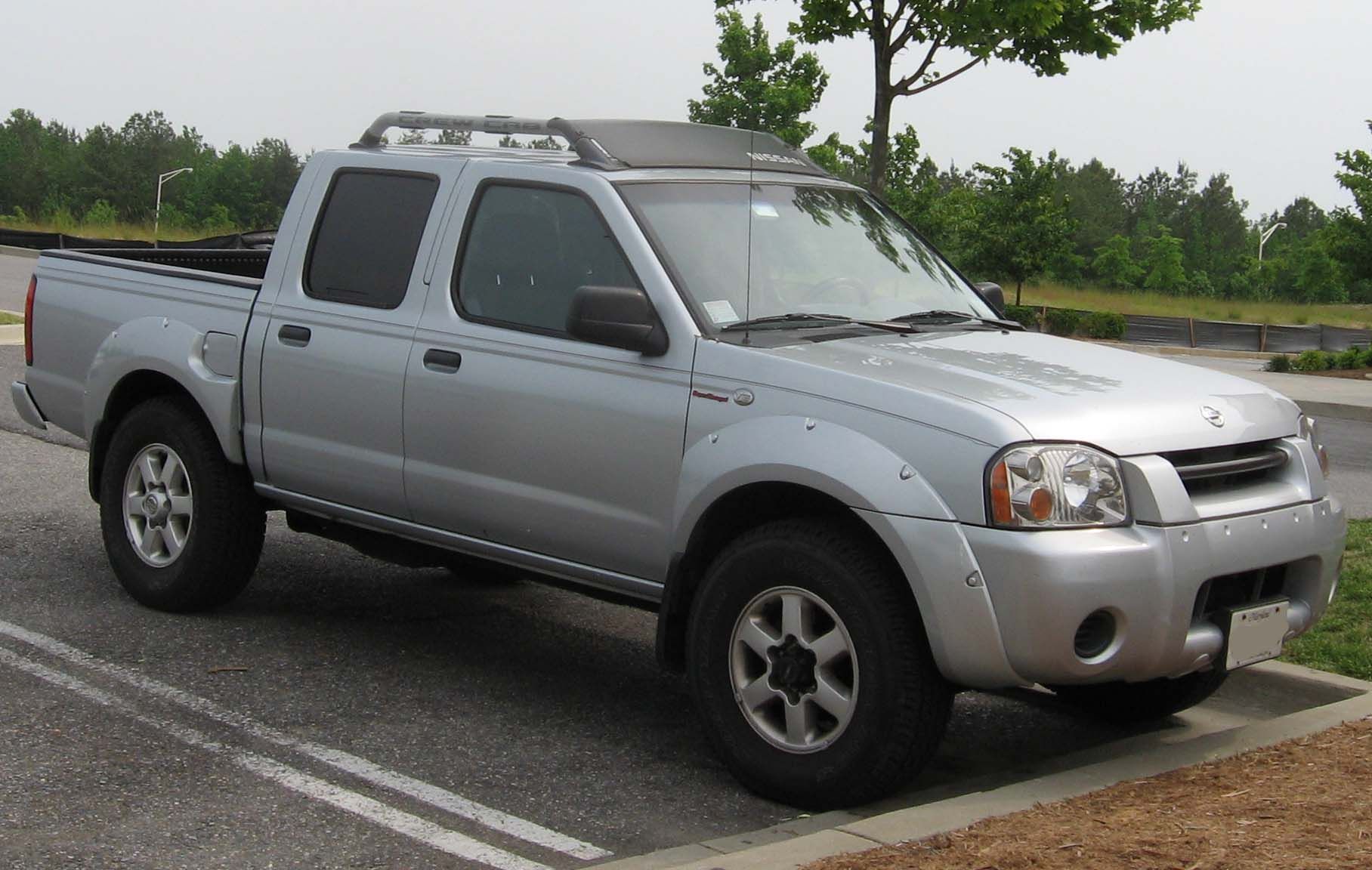
6. **Nissan Frontier**: The Nissan Frontier is a mid-size pickup truck that has, for years, been a workhorse for many. However, the 2025 model iteration continues to carry baggage that makes it a less-than-ideal choice in a highly competitive segment. With a Consumer Reports reliability score of 23 out of 100, it’s clear the Frontier is battling some significant underlying issues that go beyond minor annoyances. This is a truck that demands your attention—but for all the wrong reasons.
One of the biggest red flags for the Frontier, as highlighted by its reliability scores, lies within its transmission. This is a crucial component for any vehicle, especially a truck expected to handle various loads and terrains. Beyond the transmission, owners have consistently reported issues with electrical accessories and body hardware, which, while perhaps not immediately catastrophic, can lead to a constant stream of irritating and costly repairs down the line.
Adding to its woes, the Frontier is also critiqued for its tight passenger space, making it less comfortable for multiple occupants, especially on longer journeys. Its towing capacity also falls short when compared to other formidable trucks in its class, limiting its utility for those who need serious hauling power. This is a crucial distinction for truck buyers, who often prioritize capability above all else.
Perhaps the most frustrating aspect for prospective 2025 buyers is the stark reality that there haven’t been any significant mechanical upgrades from previous models. This means persistent complaints of loud engines and disappointing fuel economy, which have been a thorn in the Frontier’s side for some time, remain unaddressed. In a market where competitors are constantly innovating and improving, buying a 2025 Frontier feels like a step backward, leaving you with a truck that’s already behind the curve in critical areas.
Car Model Information: 2016 Nissan Frontier SV
Categories: All set index articles, Articles with short description, Nissan vehicles, Set index articles on cars, Short description is different from Wikidata
Summary: The Nissan Frontier is a nameplate used on three different pickup truck models by Nissan:
Nissan Frontier (international), an alternative nameplate for the NP300/Navara on some markets
Nissan Frontier (North America), a rebadged NP300/Navara from 1997 to 2021, then became a separate model since 2021
Nissan Frontier Pro, a rebadged Dongfeng Z9 PHEV that will be available from 2025.
Get more information about: Nissan Frontier
Buying a high-performing used car >>>
Brand: Nissan Model: Frontier
Price: $15,934 Mileage: 115,564 mi.
Read more about: Free Upgrade Potential: 10 New 2024 Models Poised for Big Discounts
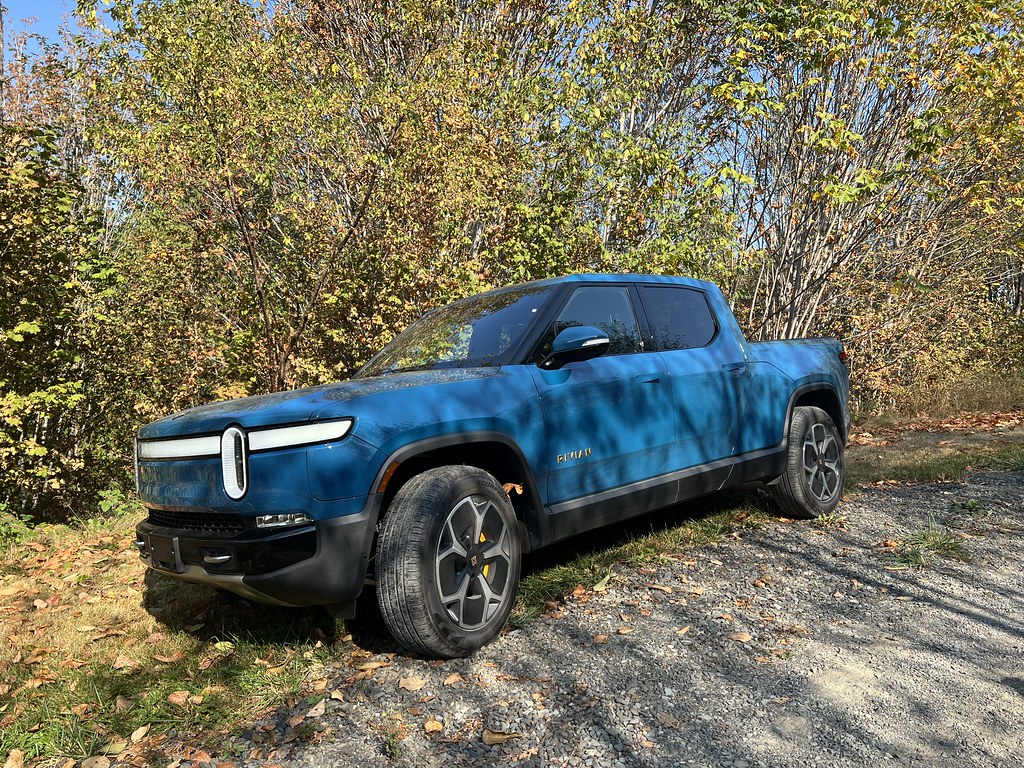
7. **Rivian R1T**: Electric trucks are the future, and the Rivian R1T certainly makes a compelling case on paper with its innovative design and impressive performance figures. It’s a trailblazer, literally and figuratively. However, being an early adopter often comes with risks, and for the 2025 R1T, those risks manifest in some concerning ways. Consumer Reports rated its reliability at a mere 22 out of 100, indicating that while it’s cutting-edge, it might also be a headache waiting to happen.
The reliability concerns span across vital areas. Problems with the drive system itself are a significant red flag, as are issues with the climate system, which can severely impact comfort, especially in extreme weather conditions. Beyond these, owners have reported niggles with body hardware, along with various unexplained noises and leaks that detract from the premium experience one expects from a vehicle in its price bracket. These aren’t just minor software glitches; they’re pointing to potential mechanical and assembly quality control issues.
For a vehicle positioned at the forefront of automotive technology, the R1T also surprisingly misses the mark on some crucial modern amenities. Car and Driver reported a notable omission: the 2025 R1T *still* doesn’t offer Apple CarPlay or Android Auto capabilities. In an age where seamless smartphone integration is practically a baseline expectation, its absence is a major oversight that can seriously impact the daily convenience and entertainment experience for many drivers.
Moreover, while its electric range is generally impressive, Car and Driver also highlighted that its real-world range is “impacted a lot by tire choice.” This means that selecting the wrong tires—perhaps for off-road capability or aesthetic reasons—can significantly diminish one of the R1T’s core selling points, more so than in other similar models. This puts an unusual burden on the owner to carefully consider tire selection, or face a shorter range than anticipated. For those looking for a dependable, no-compromise electric truck, the R1T’s current crop of reliability and feature gaps makes it a difficult recommendation for 2025.
Alright, gearheads, if you thought the first batch was a tough pill to swallow, buckle up. We’re just getting started on our mission to save your wallets and your sanity. Because while some cars might look great on the lot, beneath that shiny paint often lies a lurking mechanical monster, ready to turn your dream ride into a recurring nightmare. Let’s keep digging into the models that you absolutely should be avoiding in 2025, continuing our journey from the highly problematic to the utterly perplexing.
Car Model Information: 2025 Rivian R1T Adventure Package
Name: Rivian R1T
Manufacturer: Rivian
Production: 2021–present
ModelYears: 2022–present
Assembly: Rivian Automotive,LLC
Designer: Jeff Hammoud
Class: Mid-size car,luxury car,pickup truck
BodyStyle: crew cab
Layout: unbulleted list
Related: Rivian R1S
Motor: Alternating current,Permanent magnet motor
Transmission: Single-speed
Battery: kWh,lithium-ion battery
ElectricRange: unbulleted list
Abbr: on
Charging: unbulleted list
Wheelbase: 135.9 in
Length: 217.1 in
Width: 81.8 in
Height: 75.7 in
Weight: cvt
Sp: us
Powerout: unbulleted list
Chassis: Body-on-frame
Categories: All Wikipedia articles written in American English, All articles with vague or ambiguous time, Articles with short description, Commons category link is on Wikidata, Electric trucks
Summary: The Rivian R1T is a battery electric mid-size light duty luxury pickup truck produced by the American company Rivian. The first production R1T was manufactured in Illinois on September 28, 2021, and was delivered to a customer. The official EPA range for the Rivian R1T (MY 2022–2024) ranges from 255–420 miles (410–676 km), depending on drivetrain, battery pack capacity and wheel size.
Get more information about: Rivian R1T
Buying a high-performing used car >>>
Brand: Rivian Model: R1T
Price: $68,971 Mileage: 6,695 mi.
Read more about: Unmasking the Hype: 14 Overrated Trucks & SUVs That Fall Short for Tough Jobs, According to Engineers and Towing Tests
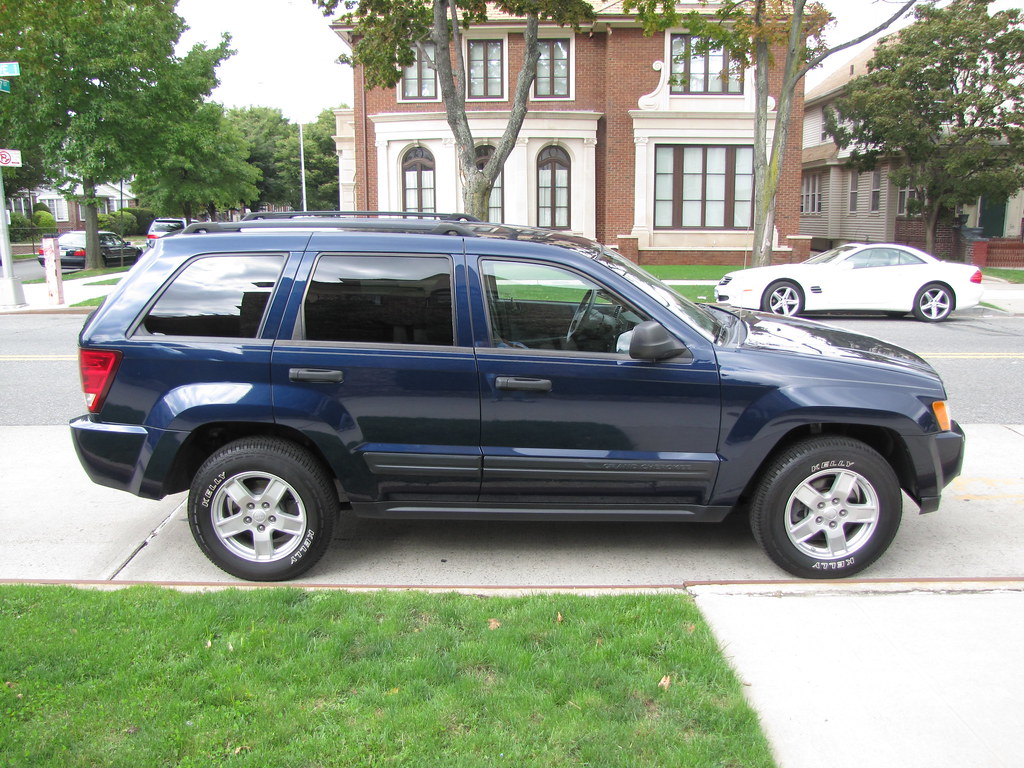
8. **Jeep Grand Cherokee**: If the standard Jeep Wrangler had you raising an eyebrow, the Jeep Grand Cherokee, especially its 2025 iteration, deserves a full-blown stare of concern. Marketed as a capable off-roading SUV, its allure is quickly overshadowed by a significant, rather alarming total cost of ownership over five years, which hovers around a hefty $70,241. This isn’t just about the upfront cost; it’s the ongoing financial bleed that truly makes it a questionable investment.
Consumer Reports, a trusted voice in vehicle assessments, handed the Grand Cherokee a less-than-stellar reliability score of 26 out of 100. That score isn’t merely a suggestion; it’s a flashing red light for potential buyers. Digging deeper, the trouble spots are numerous and impactful, including persistent complaints about its suspension, electrical accessories, and the very drive system that gets you going. Even the in-car electronics and basic body hardware haven’t escaped scrutiny, with owners reporting various noises and leaks that chip away at the premium experience.
Adding insult to injury, the 2024 model saw a substantial price increase, coupled with the baffling removal of standard features like the Quadra-Trac II system. This means you’re paying more for less capability right out of the gate, which is a tough sell in any market. While the interior might present an “upscale” facade, actual build quality is often found wanting, and excessive road noise frequently intrudes, undermining any sense of luxury. For a vehicle that promises adventure and refinement, the Grand Cherokee for 2025 delivers neither reliably nor economically.
Car Model Information: 2019 Mazda CX-5 Grand Touring Reserve
Name: Jeep Grand Cherokee
Manufacturer: Jeep
Production: 1992–present
ModelYears: 1993–present
Class: unbulleted list
BodyStyle: sport utility vehicle
Layout: unbulleted list
Chassis: Vehicle_frame#Uniframe
Categories: 2000s cars, 2010s cars, 2020s cars, All-wheel-drive vehicles, All Wikipedia articles written in American English
Summary: The Jeep Grand Cherokee is a range of mid-sized sport utility vehicles produced by American manufacturer Jeep. At its introduction, while most SUVs were still manufactured with body-on-frame construction, the Grand Cherokee has used a unibody chassis from the start.
Get more information about: Jeep Grand Cherokee
Buying a high-performing used car >>>
Brand: Jeep Model: Grand Cherokee
Price: $20,961 Mileage: 52,000 mi.
Read more about: Lemon in the Garage: 14 Models Drivers Vow Never to Buy Again Due to Poor Build Quality
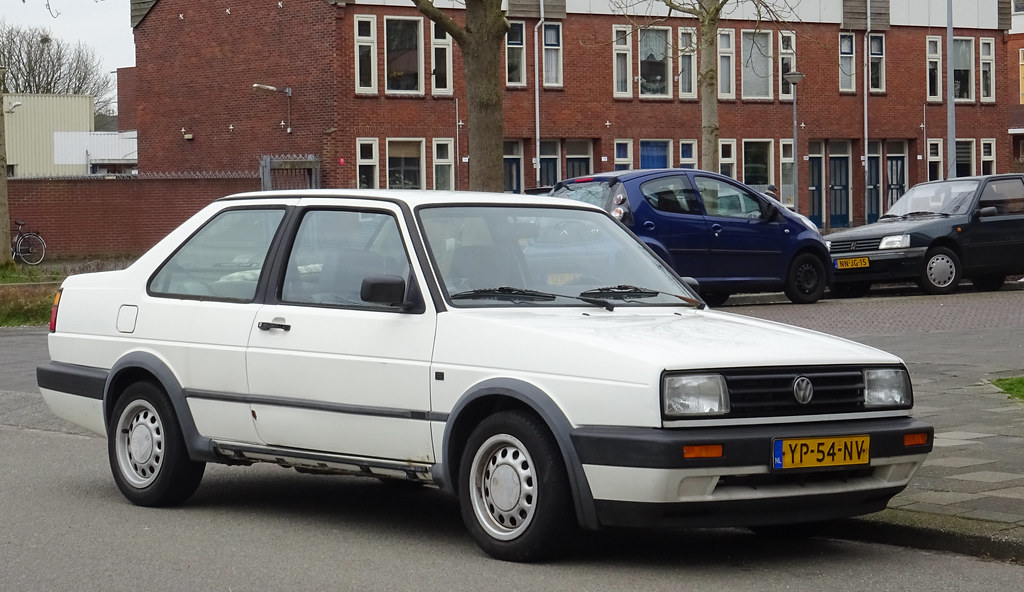
9. **Volkswagen Jetta**: The Volkswagen Jetta, for many, represents a sensible, understated choice in the compact sedan segment. It often appeals to those looking for European flair without breaking the bank. However, for 2025, even the Jetta finds itself on our list of cars to approach with extreme caution, and for reasons that strike at the heart of everyday dependability.
Despite its generally appealing fuel efficiency, clocking in at an overall 34 miles per gallon, the Jetta’s reliability record is a major concern. Consumer Reports gave it a dismal score of just 25 out of 100, which, let’s be honest, is practically a failing grade for a new vehicle. This isn’t about minor quirks; we’re talking about fundamental issues that can turn daily commutes into frustrating episodes.
Key trouble spots identified include the brakes, a pretty non-negotiable part of vehicle safety, and electrical accessories that can act up unexpectedly. Beyond that, problems with the climate system and in-car electronics frequently arise. When essential functions like your air conditioning or infotainment system start failing, the car quickly loses its appeal, becoming a source of stress rather than a convenient mode of transport. For buyers prioritizing peace of mind and consistent performance, the Jetta’s reliability woes make it a definite sidestep for 2025.
Car Model Information: 2011 Volkswagen Jetta SportWagen TDI
Name: Volkswagen Jetta
Production: 1979–present
Class: Compact car
Sp: uk
Categories: 1980s cars, 1990s cars, 2000s cars, 2010s cars, All-wheel-drive vehicles
Summary: The Volkswagen Jetta () is a compact car/small family car manufactured and marketed by Volkswagen since 1979. Positioned to fill a sedan niche slightly above the firm’s Golf hatchback, it has been marketed over seven generations, variously as the Atlantic, Vento, Bora, City Jetta, Jetta City, GLI, Jetta, Clasico, and Sagitar (in China).
The Jetta has been offered in two- and four-door saloon / sedan and sometimes as five-door wagon / estate versions. Since the original version in 1980, the car has grown in size and power with each generation. By mid-2011, almost 10 million Jettas have been produced and sold all over the world. As of April 2014, Volkswagen marketed over 14 million, becoming its top selling model.
Get more information about: Volkswagen Jetta
Buying a high-performing used car >>>
Brand: Volkswagen Model: Jetta
Price: $9,032 Mileage: 92,170 mi.
Read more about: The 10 Most Dangerous New Cars for New Drivers: What NHTSA and Crash Test Results Reveal
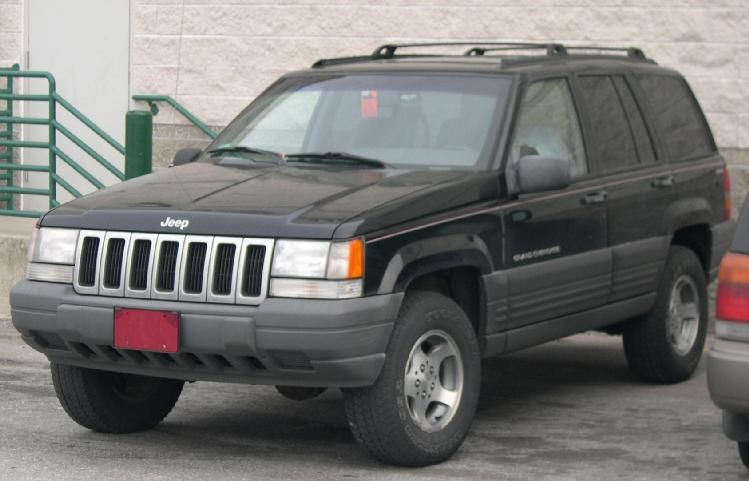
10. **Jeep Grand Cherokee L**: You might be sensing a pattern here with Jeep, and unfortunately, the Grand Cherokee L doesn’t break the mold when it comes to reliability. This longer, three-row variant of the Grand Cherokee aims to offer more space for families, but it inherits many of the same issues, alongside a few of its own, cementing its place on our ‘do not buy’ list for 2025.
Sporting a reliability score of 23 out of 100 from Consumer Reports, the Grand Cherokee L falls squarely into the territory of vehicles known for consistent problems. Like its two-row sibling, it struggles with suspension issues, electrical accessories malfunctions, and problems with the drive system. These aren’t minor annoyances; these are systemic flaws that can lead to costly repairs and frequent trips to the dealership.
Furthermore, owners frequently report glitches with the in-car electronics and issues with body hardware, which can manifest as ill-fitting panels or unexpected rattles. Add in the perennial complaints about various noises and leaks, and you have a vehicle that, despite its larger footprint and family-oriented promises, delivers a frustratingly unreliable ownership experience. For families needing dependable transport, the Grand Cherokee L’s reliability concerns make it a compromise too far.
Car Model Information: 2019 Mazda CX-5 Grand Touring Reserve
Name: Jeep Grand Cherokee
Manufacturer: Jeep
Production: 1992–present
ModelYears: 1993–present
Class: unbulleted list
BodyStyle: sport utility vehicle
Layout: unbulleted list
Chassis: Vehicle_frame#Uniframe
Categories: 2000s cars, 2010s cars, 2020s cars, All-wheel-drive vehicles, All Wikipedia articles written in American English
Summary: The Jeep Grand Cherokee is a range of mid-sized sport utility vehicles produced by American manufacturer Jeep. At its introduction, while most SUVs were still manufactured with body-on-frame construction, the Grand Cherokee has used a unibody chassis from the start.
Get more information about: Jeep Grand Cherokee
Buying a high-performing used car >>>
Brand: Jeep Model: Grand Cherokee L
Price: $20,961 Mileage: 52,000 mi.
Read more about: Lemon in the Garage: 14 Models Drivers Vow Never to Buy Again Due to Poor Build Quality
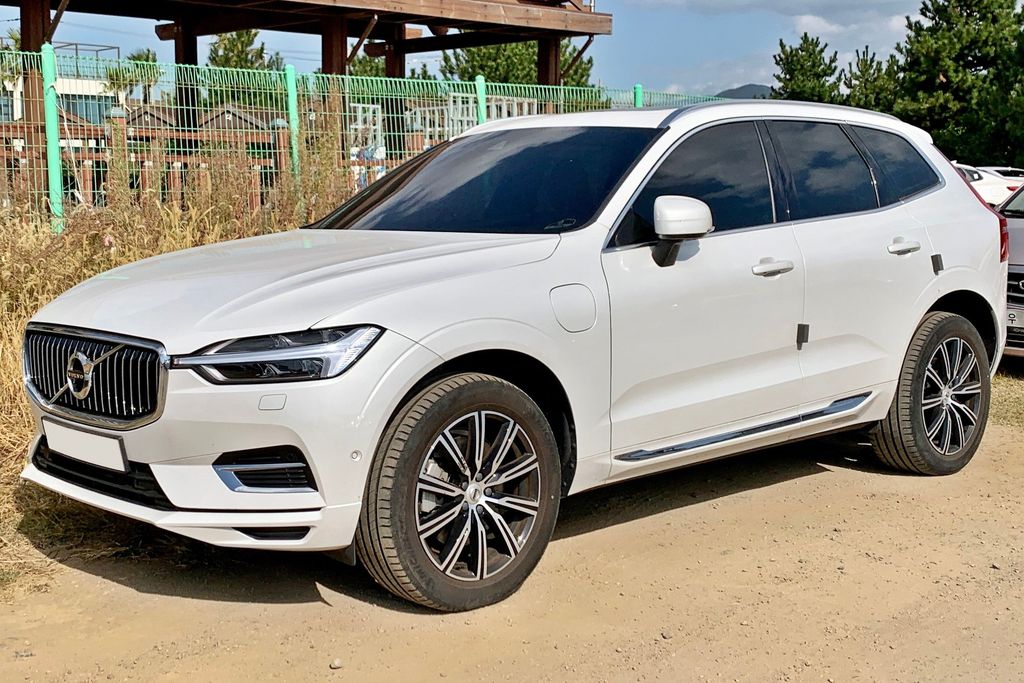
11. **Volvo XC60 Plug-In Hybrid**: Volvo has long been synonymous with safety and understated Scandinavian luxury. Their foray into plug-in hybrids, such as the XC60, aims to blend efficiency with premium comfort. However, the 2025 XC60 Plug-In Hybrid seems to stumble significantly on the reliability front, making it a surprisingly problematic choice for discerning buyers.
Consumer Reports assigned the XC60 Plug-In Hybrid a concerning reliability score of just 21 out of 100. This low score signals that despite its advanced technology and premium pricing, owners are encountering a range of issues that detract from the overall experience. The very components that define it as a hybrid are major trouble spots, with problems reported concerning the EV battery and its charging system. This is a critical failure point, as the battery is the heart of its hybrid promise.
Beyond the hybrid-specific issues, owners have also reported faults with electrical accessories, the climate system, and the in-car electronics, which can diminish daily comfort and convenience. Car and Driver also chimed in, pointing out other notable downsides such as “limited cargo space and bumpy ride.” When you’re investing in a luxury plug-in hybrid, you expect seamless operation and a comfortable journey, neither of which the 2025 XC60 Plug-In Hybrid consistently delivers, making it a tough recommendation.
Read more about: Nightmare in the Driveway: 10 SUVs Dealers Say They Can’t Move Due to Lingering Issues
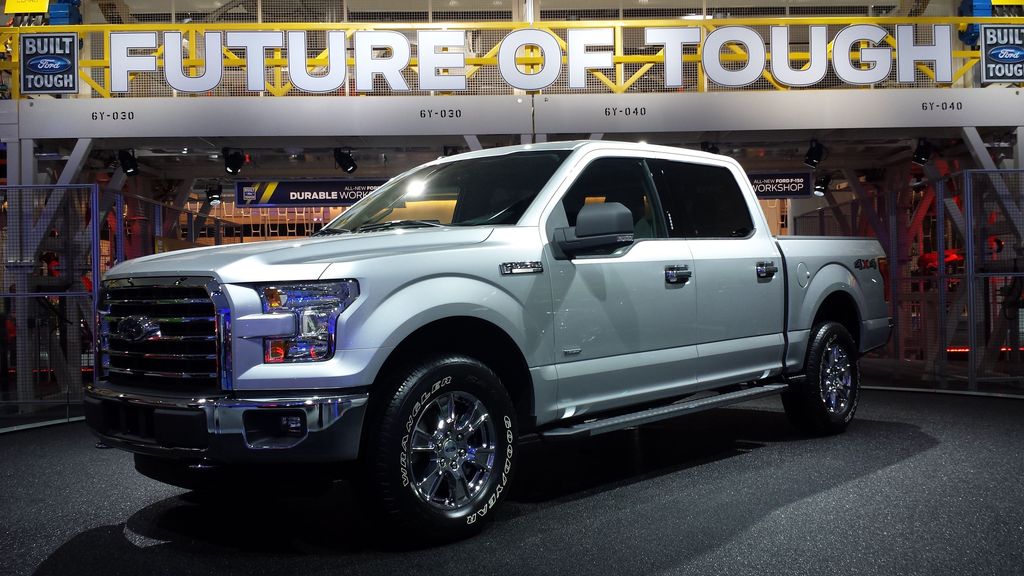
12. **Ford F-150 Hybrid**: The Ford F-150 is America’s best-selling truck, a titan of utility and capability. The introduction of a hybrid powertrain in recent years promised to marry that legendary workhorse prowess with improved efficiency. But for 2025, the F-150 Hybrid unfortunately finds itself in a precarious position on our ‘avoid’ list, proving that not all innovations are flawless from the get-go.
With a reliability score of 19 out of 100 from Consumer Reports, the F-150 Hybrid is clearly grappling with some significant and pervasive issues. Its trouble spots read like a laundry list of major components, including the transmission, the electric system, and, critically, the electric/hybrid battery itself. These are not minor glitches; they are core systems that can lead to expensive repairs and leave you stranded.
Further compounding its problems are reported issues with electrical accessories, the drive system, in-car electronics, and various noises and leaks. What’s more, Edmunds reported that there aren’t any “big changes for the 2025 Ford F-150 hybrid,” which means many of these underlying issues likely persist. They also noted that the interior storage is “pretty limited,” and the optional hybrid powertrain can be “quite noisy.” For truck buyers who prioritize bulletproof reliability and practical utility, the F-150 Hybrid, in its current state, asks for too many compromises.
Car Model Information: 2019 Mazda CX-5 Grand Touring Reserve
Name: Ford F-Series
Caption: 2022 Ford F-150 Lariat Luxury
Manufacturer: Ford Motor Company
Aka: Ford Lobo (Mexico, 1992–present)
Production: 1948–present
Class: Pickup truck#Full-size pickup truck
Layout: Front-engine, rear-wheel-drive layout,rear-wheel drive
Predecessor: 1941 Ford
Categories: All-wheel-drive vehicles, All Wikipedia articles written in American English, All articles that may contain original research, All articles with unsourced statements, Articles that may contain original research from September 2020
Summary: The Ford F-Series is a series of light-duty trucks marketed and manufactured by the Ford Motor Company since model year 1948 as a range of full-sized pickup trucks — positioned between Ford’s Ranger and Super Duty pickup trucks. Alongside the F-150 (introduced in 1975), the F-Series also includes the Super Duty series (introduced in 1999), which includes the heavier-duty F-250 through F-450 pickups, F-450/F-550 chassis cabs, and F-600/F-650/F-750 Class 6–8 commercial trucks.
Get more information about: Ford F-Series
Buying a high-performing used car >>>
Brand: Ford Model: F-150 Hybrid
Price: $20,961 Mileage: 52,000 mi.
Read more about: The 12 Most Boring Crossovers in the Market Right Now: What Critics and Performance Specs Reveal for Enthusiasts.
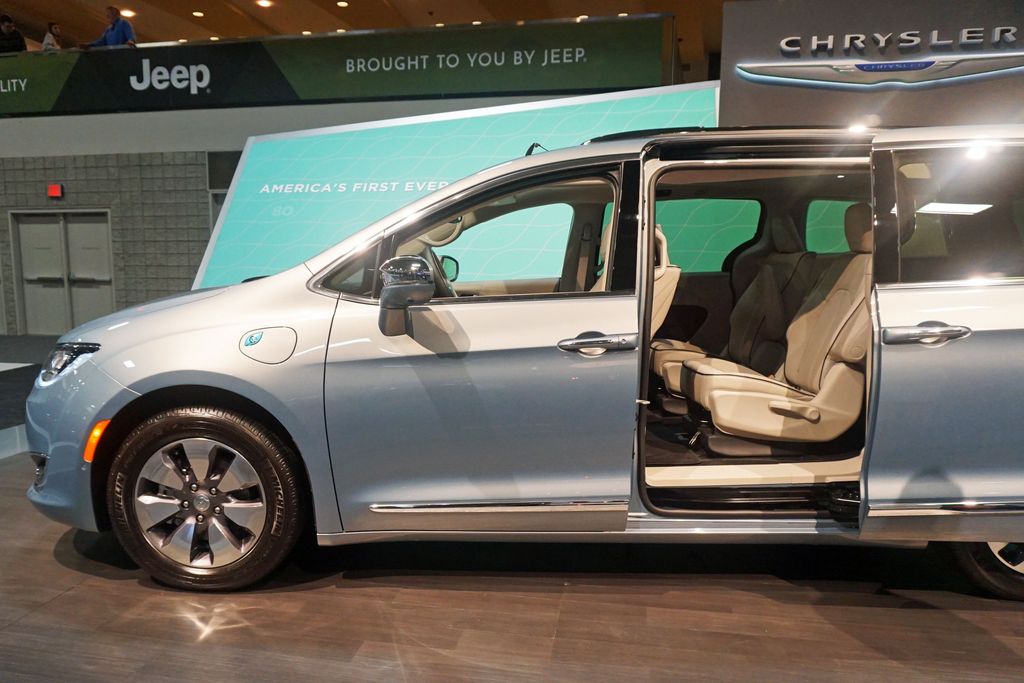
13. **Chrysler Pacifica Hybrid**: Minivans might not be the flashiest vehicles on the road, but for families, they represent peak practicality and comfort. The Chrysler Pacifica Hybrid aimed to elevate this segment further by offering impressive efficiency. However, its lofty promises are continually undermined by a startling lack of reliability and some significant design compromises, earning it a firmly established spot on our list of cars to avoid.
Consumer Reports delivered a scathing reliability score of just 14 out of 100 for the Pacifica Hybrid, making it one of the least dependable vehicles out there. The vast majority of its problems stem directly from its complex hybrid system. Critical trouble spots include the electric/hybrid battery, issues with electric charging, and the electric motor itself. These are catastrophic failures for a hybrid, turning its core advantage into its biggest liability.
Beyond the hybrid powertrain, in-car electronics also plague owners, adding to the frustration. Car and Driver pointed out another peculiar drawback: for those opting for the all-wheel-drive (AWD) model, the system will reportedly “use up all the fuel that having a hybrid in the first place would save.” This completely negates the primary benefit of going hybrid! Moreover, the hybrid model curiously omits the convenient second-row “Stow ‘n Go” seats, a signature feature that defines minivan versatility. For families seeking reliable, practical, and truly efficient transport, the Pacifica Hybrid is a gamble that rarely pays off.
Car Model Information: 2019 Mazda CX-5 Grand Touring Reserve
Name: Chrysler Pacifica (RU)
Manufacturer: Chrysler (automotive brand)
Aka: Chrysler Voyager,Chrysler Grand Caravan (Canada, 2021–present)
Production: 2016–present
ModelYears: 2017–present
Assembly: Windsor, Ontario
Designer: Irina Zavatski,Winnie Cheung (interior)
Class: Minivan
BodyStyle: 5-door minivan
Layout: Front-engine, front-wheel drive,Front-engine, all-wheel drive
Platform: Compact U.S. Wide platform
Related: Chrysler 200#Second generation (2014–)
Engine: Chrysler Pentastar engine#3.6L,FCA Global Medium Engine
Motor: 2x electric motors (SiEVT main motor & motor generator; PHEV)
Transmission: ZF 9HP transmission,automatic transmission,Continuously variable transmission
Drivetrain: PHEV
ElectricRange: cvt
Battery: val,lithium-ion battery
Wheelbase: 3089 mm
Abbr: on
Order: flip (hybrid)
Length: 203.6 in
Width: 79.6 in
Height: convert
Weight: {{convert,1964,kg,lb,abbr=on,order=flip
Predecessor: Chrysler minivans (RT)
Categories: 2010s cars, All-wheel-drive vehicles, Articles with short description, CS1 Spanish-language sources (es), Cars introduced in 2016
Summary: The Chrysler Pacifica is a minivan produced by the Chrysler division of Stellantis since the 2017 model year. Replacing the Chrysler Town & Country, the Pacifica is the sixth generation of Chrysler minivans, taking its name from the 2004–2008 product line. Along with serving as the first minivan with a plug-in hybrid drivetrain, the Pacifica has also served as a platform for autonomous vehicle development.
For the 2020 model year, Chrysler repackaged the lower-trim versions of the Pacifica as a revived Chrysler Voyager, largely to expand fleet sales of the model line; following the retirement of the Dodge Grand Caravan, the Chrysler Voyager was introduced in Canada for 2021 as the Chrysler Grand Caravan (moving the nameplate from Dodge to Chrysler after 36 years). Following the retirement of the Chrysler 300 sedan, the Pacifica/Voyager/Grand Caravan is currently the only vehicle marketed by Chrysler.
Chrysler has assembled the Pacifica minivan (and the Voyager/Grand Caravan) in its Windsor Assembly facility in Ontario (home to Chrysler minivan assembly since 1983).
Get more information about: Chrysler Pacifica (minivan)
Buying a high-performing used car >>>
Brand: Chrysler Model: Pacifica Hybrid
Price: $20,961 Mileage: 52,000 mi.
Read more about: The Unexpected Comeback: Why Modern Minivans Are Outpacing Three-Row SUVs for Today’s Families

14. **Mercedes A-Class PHEV**: When you hear “Mercedes-Benz,” thoughts of refined luxury, sophisticated engineering, and German precision typically come to mind. However, the A-Class Plug-in Hybrid (PHEV) demonstrates that even premium badges can be attached to vehicles that become financial sinkholes, largely due to its notoriously pricey repairs and practical shortcomings.
Owners of this model have reported some eye-watering repair bills, with about 9% of hybrid owners having to shell out more than $2,000 for unexpected fixes. This figure stands in stark contrast to the lower repair costs typically faced by owners of the gasoline and diesel A-Class variants, clearly indicating the additional financial burden that comes with its complex hybrid powertrain. When a significant portion of owners are facing four-figure repair costs, it’s a huge red flag.
Adding to the financial woes, the A-Class PHEV also struggles with practicality, which is a key consideration for any compact luxury vehicle. Edmunds noted that it lacks “a ton of cargo capacity in comparison to similar cars.” For a premium vehicle, this oversight in fundamental utility, coupled with the high potential for expensive repairs, makes the Mercedes A-Class PHEV a particularly unappealing prospect for 2025. It simply doesn’t deliver the value or peace of mind one expects from a brand of this caliber.
Read more about: Regret with Every Tank: 12 Used Cars That Fail to Deliver Promised Reliability and Fuel Efficiency
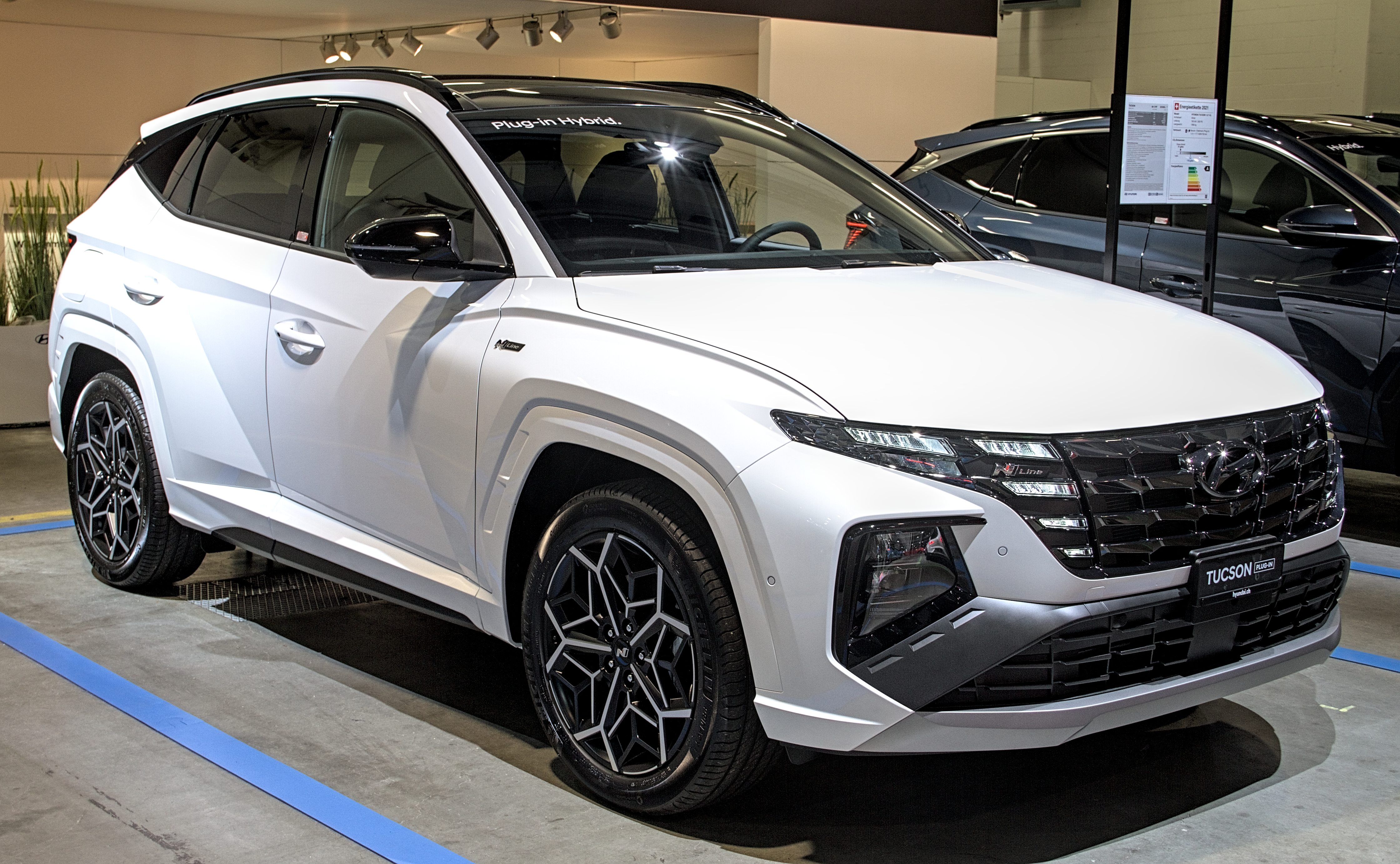
15. **Hyundai Tucson**: The Hyundai Tucson has enjoyed a reputation as a stylish and value-packed compact SUV, often seen as a smart choice for many. However, for 2025, its performance—or rather, its lack thereof—is a significant detractor that lands it on our list of vehicles to think twice about. Because while looks might sell, a truly frustrating driving experience can quickly sour the ownership.
Expert reviews from sources like Edmunds have consistently highlighted the Tucson’s “less than stellar reviews when it comes to performance.” Specifically, it has a “rough time accelerating,” which might sound like a minor complaint on paper, but in real-world driving, it translates to a constant source of irritation. Imagine trying to merge onto a busy freeway, or pass slower traffic, only to find your vehicle struggling to keep up. That’s not just annoying; it can be downright dangerous and incredibly frustrating.
This sluggish acceleration can make daily driving, especially on highways or in situations requiring quick bursts of speed, a chore rather than a pleasure. A car should inspire confidence, not require you to plan every acceleration maneuver with the precision of a chess grandmaster. When an SUV, a category often chosen for its versatility and perceived robustness, fails on such a fundamental driving dynamic, it makes a strong case for exploring alternatives that offer a more responsive and enjoyable ride.
Car Model Information: 2024 Hyundai TUCSON SEL
Name: Hyundai Tucson
Caption: Hyundai Tucson (NX4, SWB)
Manufacturer: Hyundai Motor Company
Aka: Hyundai ix35 (2009–2015)
Production: 2004–present
ModelYears: 2005–present
Class: Compact crossover SUV
BodyStyle: sport utility vehicle
Layout: Front-engine, front-wheel-drive layout,Front-engine, four-wheel-drive layout
Sp: us
Categories: 2010s cars, All-wheel-drive vehicles, All Wikipedia articles written in British English, All articles needing additional references, All articles with dead external links
Summary: The Hyundai Tucson (; Korean: 현대 투싼) is a compact crossover SUV produced by the South Korean manufacturer Hyundai. It is named after the city of Tucson, Arizona, U.S.
The second-generation model was marketed as the Hyundai ix35 in several markets, including Europe, Australia and China, before reverting to Tucson for the third-generation. Since its first-generation, the Tucson has been developed alongside the Kia Sportage, sharing platforms and engines.
The Tucson is the best-selling Hyundai model, with more than 7 million units sold globally since it launched in 2004. Of these, 1.4 million units have been sold in Europe.
Get more information about: Hyundai Tucson
Buying a high-performing used car >>>
Brand: Hyundai Model: Tucson
Price: $21,189 Mileage: 58,198 mi.
Read more about: Unlocking Unbeatable Value: The 14 Best Used Car Deals for Savvy Buyers, Backed by Expert Analysis and Data
So, there you have it, folks. Our extensive deep dive into the vehicles you should seriously consider giving a wide berth in 2025. From persistent mechanical headaches and hidden hybrid disappointments to questionable design choices and simply frustrating driving dynamics, this list is a stark reminder that a new car purchase requires more than just a glance at the glossy brochure. It demands rigorous research, a critical eye, and an unwavering commitment to finding a vehicle that will truly serve you well, rather than drain your bank account and test your patience. Don’t be swayed by marketing hype; let the data and these real-world insights guide your next big decision. Your future self, and your wallet, will thank you.” , “_words_section2”: “1994


